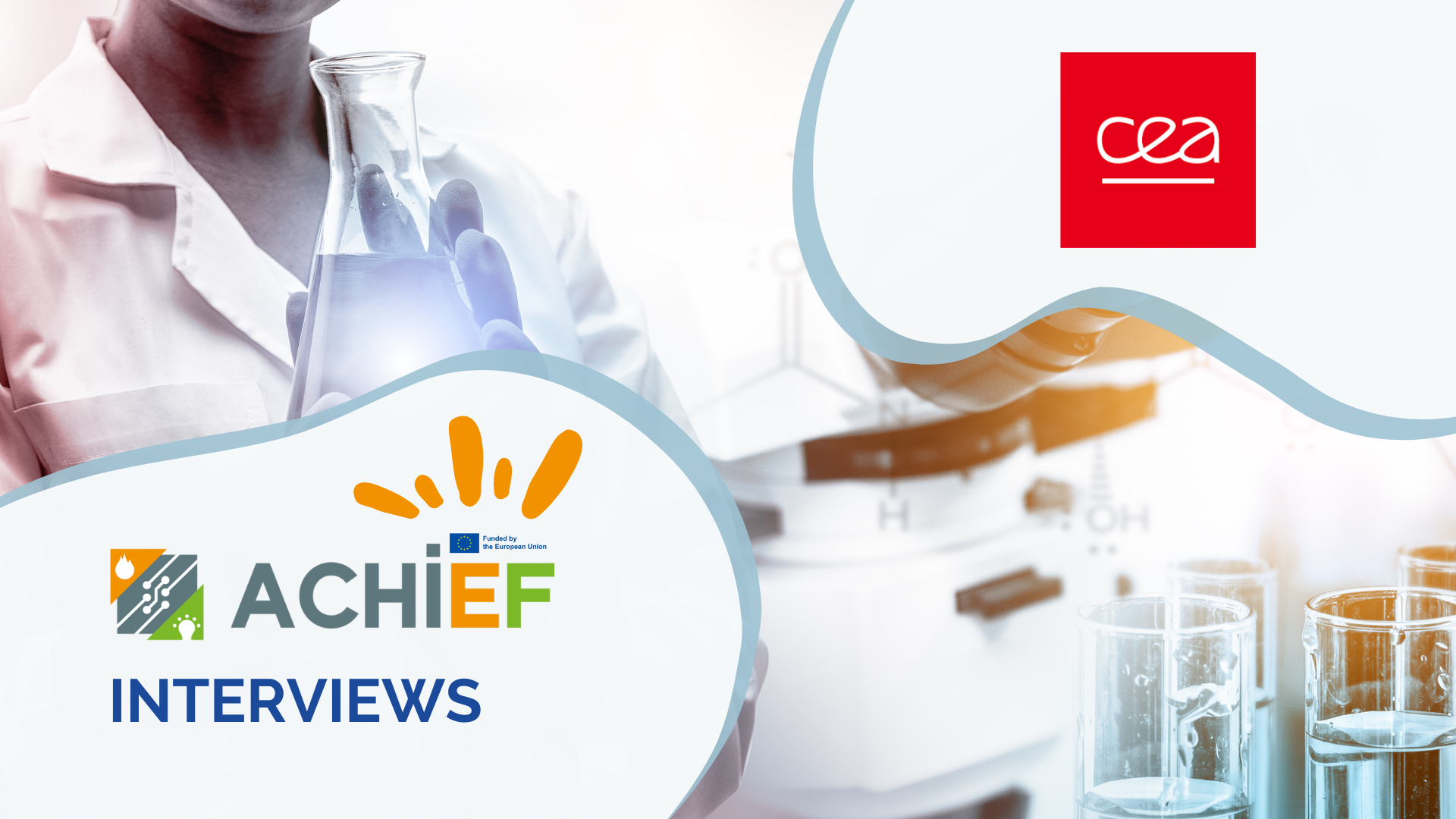![]() 29/01/2024
29/01/2024
Redefining success: Conversations with CEA
As a precursor of the ACHIEF project, what led you to take the road to set the consortium and what’s your current role?
At the core of our initiative is CEA’s commitment to enhancing the energy efficiency of processes and materials. Building on this commitment, we formed a consortium comprising various research institutes across Europe, along with three key industrial partners—Constellium, Tupras and ArcelorMital. Together, our goal is to diminish power and material consumption across these industries, ultimately enhancing the competitiveness of Europe’s industrial sector on the global market. As the coordinator our responsibility is to cultivate effective communication and collaboration among all partners.
What are your ambitions in contributing to the European Action Plan on energy efficiency in the framework of the energy-intensive industries?
Our ambitions within the European Action Plan on energy efficiency for energy-intensive industries are twofold. Firstly, we are dedicated to implementing innovative solutions that align with the plan’s objectives, focusing on our industrial partners Constellium (aluminum), Tupras (oil and gas), and ArcelorMittal (steel).
Secondly, by enhancing energy efficiency in these industries, we aim to boost their competitiveness in the global market and we aspire to serve as a model for sustainable practices within the energy-intensive sector, working closely with our partners to showcase tangible reductions in power and material consumption. Through these collaborative efforts, we aim to make significant contributions to the European Action Plan’s goals and advance sustainability in partnership with Constellium, Tupras and ArcelorMittal.
What were the main challenges when providing guidelines for the formulation of Polymer Derived Ceramic (PDC) coatings for high-temperature corrosion protection?
The design of the PDC formulation were guided by former experiences in the LFM laboratory in Grenoble as well as with both the thermodynamic calculations carried out during the project and the work performed by our partners AIMEN and VTT on the numerical toolkit for Polymer Derived Ceramic (PDC) design.
The experimental challenges were significant, considering that the majority of previous developments for these coatings had been limited to lab-scale applications. The ACHIEF project has engaged partners to collaborate, along with external partners, in developing an industrial-scale coating process for three specific use cases from Constellium and Tupras.
During the last year of the project, we will hopefully enlighten the increase of performance of the coated parts in industrial processes versus their uncoated counterparts.
What is the current status of the PDC composites’ testing?
For the Hydrochloric Acid (HCl) corrosion, very recently a pipe from Tupras was coated by a PDC coating at our subcontractor for spray paint and sent to AIMEN in Spain so the optical fiber sensor could be implemented on the pipe. The coated pipe successfully underwent a high-pressure water test, demonstrating effective waterproof withstanding up to 5 bars of pressure. It is scheduled to be transported to the Tupras facility and integrated into the industrial pilot-scale demonstrator by te end of 2023.
Constellium have tested coatings on small graphite cylinders and have achieved a 400% increase in lifetime of the parts so that is a very good result. Also a 1:1 scale part (graphite rotor) was coated and annealed. Further characterisation at laboratory scale are ongoing before industrial testing to verify the contamination of the molten Al bath before using the PDC coating at Constellium facility.
During the first evaluation and characterization of the SEM pictures, microstructure, adhesion, what were the main results?
Utilising our expertise in PDC design and manufacturing (at lab scale) we could quickly get adhesive coatings. The microstructures showed good adhesion and low porosity for the coatings on graphite and refractories (Constellium use case). The challenging aspect of applying coatings to steel lies in achieving crack-free coatings. This becomes particularly difficult to the disparity in Coefficient of Thermal Expansion (CTE) between the coating and the substrate, and it holds significant importance for ensuring effective wet corrosion resistance.
What are the main results you have achieved as a partner in the ACHIEF project to drive energy efficiency in heavy industries?
The 400% lifetime increase for graphite parts obtained at Constellium – High-temperature (HT) oxidation – represents our most impressive result to date. Graphite is a very energy intensive product to manufacture – up to 4-month production cycle with high temperature furnaces and use of crude petroleum derivatives – so a fourfold lifetime extension represents an important energy saving.
How would you explain to a wider public what will be the impact of the ACHIEF project?
The ACHIEF project aims to make heavy industries in Europe more efficient and eco-friendly. By developing and implementing new technologies, we are cutting down on energy and material use. This not only helps the environment but also makes European industries more competitive globally. The success of ACHIEF could inspire similar projects and push industries toward greener practices.
How do you see the future of the ACHIEF project?
We see ACHIEF bringing about significant changes in energy-intensive industries. Our work with partners such as Constellium, Tupras, and ArcelorMittal is just the beginning. The advancements in coatings, especially in high-temperature corrosion protection, show great promise. In the coming phases, the ACHIEF project is set to create a lasting impact, reshaping how industries operate – enhancing efficiency, sustainability and global competitiveness.




